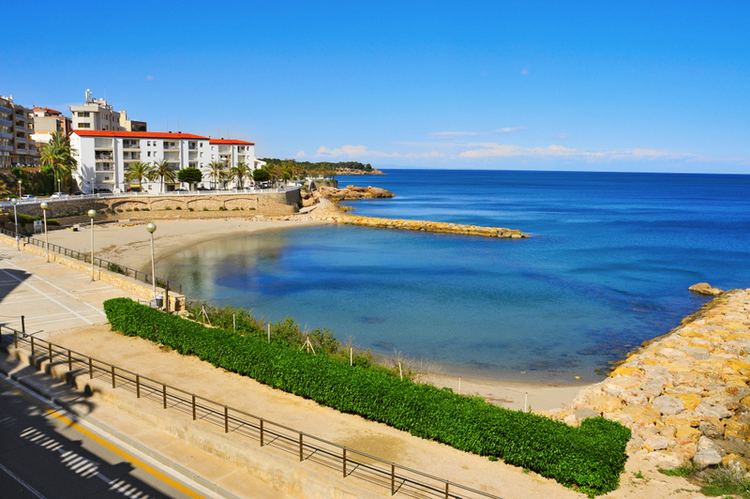Demonym(s) Calero, calera Elevation 19 m Local time Monday 1:59 AM | Website ametllamar.cat Area 66.87 km² Population 7,303 (2014) | |
 | ||
Weather 11°C, Wind N at 5 km/h, 91% Humidity | ||
Video promocional l ametlla de mar
L'Ametlla de Mar ([ɫəˈmɛʎːə ðə ˈmar]), also called la Cala ("the bay" or "the beach"), is a municipality within the comarca of Baix Ebre, situated in the coastal region between the "Cap de Terme" (to the North) and the "barranc de l'Àliga" (to the south). It is limited to the south by the boundary with El Perelló, to the north-west with that of Tivissa, the Ebro riviera, and to the north-east with that of Vandellós and l'Hospitalet de l'Infant, (Baix Camp)
Contents
- Video promocional l ametlla de mar
- Map of LAmetlla de Mar Tarragona Spain
- Camping ametlla de l ametlla de mar summer disco y m s
- Situation
- Activities
- References
Map of L'Ametlla de Mar, Tarragona, Spain
Fishing continues to be one of the principal activities of the town. The port area of Ametlla has a large fleet of fishing boats which fish using various methods, such as trawling, and also has the principal fleet of tuna fishing boats in Catalonia. The port has a sailing club with 225 berths.
Camping ametlla de l ametlla de mar summer disco y m s
Situation
Along the 14 km of coast-line within the boundaries of the locality of L'Ametlla de Mar are the towns of Calafat, Sant Jordi d'Alfama, les Tres Cales and Roques Daurades. Along the coast occur beaches of fine whitish sand or smooth pebbles.
One can arrive at l'Ametlla de Mar by the highway AP-7 (Exit 39), or by the highway N-340 or by train (RENFE) on the Barcelona-Valencia line. Also the Barcelona-Tortosa train stops at L'Ametlla de Mar. From Barcelona this train can be caught from the Estació de França which is located near the "Born" district in the Old town of Barcelona.
Activities
The museum of traditional pottery in L'Ametlla de Mar, located in the "urbanization" (recently built town or collection of houses) of Sant Jordi d'Alfama, opened its doors on 5 May 2001. Its origins, however, date from 1992 with the establishment of the Martí-Castro private foundation. Since the year 2000 the council of l'Ametlla de Mar has formed a part of the management.
The main festivals of the area are: 2 February, the festival of the "Mare de Déu de Candelera" (Literally: Our Lady of Candlemas), who is the patron saint of the village. During this festival various events take place such as a procession, concerts, "xarangues", displays of "Capgrossos" (Carnival figures with enormous heads) etc.; on 29 June takes place the festival of Saint Peter, who is the patron saint of fishermen, in which the patron saint walks aboard; on 29 May is the festival of "Corpus", during which the streets of L'Ametlla are decorated with extensive arrangements of flowers and leaves arranged in patterns or to form pictures and laid out on the asphalt of the street. Usually the people of the village stay up most of the night on the eve of the festival in order for the arrangements to be ready the next day. Finally, there is the festival of the Castell de Sant Jordi (which gives its name to the urbanization which is next to it).
